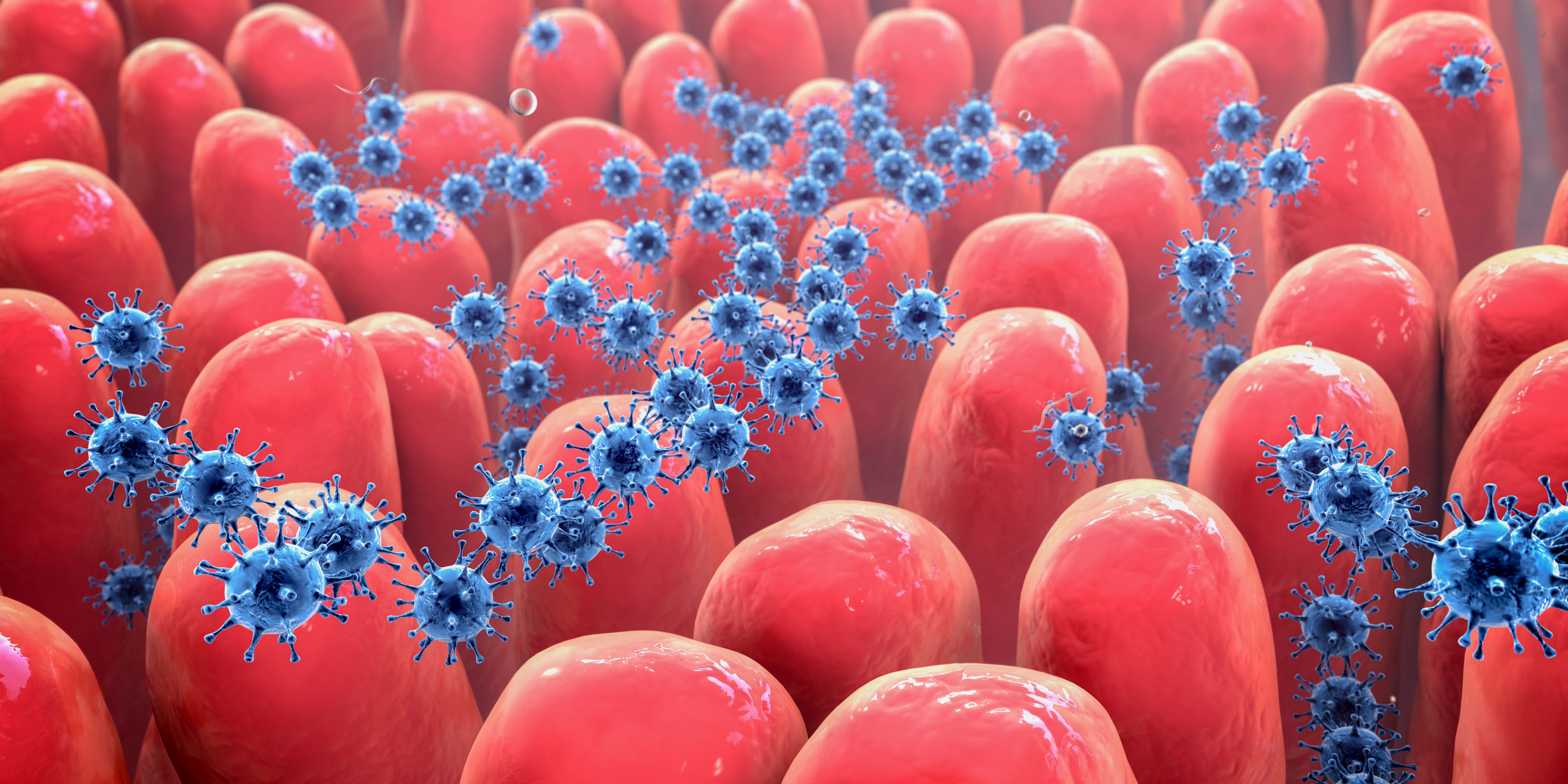Study Identifies Links Between Gut Dysbiosis and COVID-19
The data may help explain why COVID-19 patients experience dangerous secondary infections.

New research is helping to explain how infection with SARS-CoV-2 leads to disruptions in the gut microbiome that can make patients with coronavirus disease 2019 (COVID-19) more vulnerable to secondary infections.
The study, which was published in the journal Nature Communications, was led by Ken Cadwell, PhD, and Jonas Schluter, PhD, both of the New York University Grossman School of Medicine. They noted that gastrointestinal symptoms are common among people with COVID-19, even if their overall COVID-19 cases are mild. Previous studies have also suggested that the infection can lead to long-term changes in patients’ microbiomes.
“However, the causal direction of the relationship between disease symptoms and gut bacterial populations is not yet clear,” they wrote.
In hopes of clarifying that relationship, the investigators first examined a set of mice engineered to express human ACE2 protein, which is leveraged by COVID-19 to infect cells. The investigators said this model is useful because the mice develop respiratory disease in a dose-dependent manner similar to that seen in human patients with COVID-19.
Cadwell and Schluter found that the species diversity of the mice’s gut microbes decreased upon infection with COVID-19, while the number of mucus-producing goblet cells increased. The mice also experienced a drop in the number of Paneth cells; those cells produce antimicrobial compounds.
“The decrease in Paneth cells was accompanied by structural abnormalities, most notably deformed or misplaced granules, and reduced gene expression of several antimicrobial factors such as lysozyme, defensins, Reg3γ and serum amyloid A in the ileum,” the authors said.
In addition to the mice investigation, Cadwell and Schluter also looked at stool samples from 96 people with COVID-19. They found that in a significant minority (about one quarter) of patients, one single bacterial genus predominated, including antibiotic-resistant species. They further found that patients who had secondary bloodstream infections [BSIs] were more likely to have less diverse microbes.
When the researchers looked at bacterial DNA from the gut microbes of people with secondary infections, they usually found that the same species infecting the patients’ blood was also present in the gut, suggesting a possible migration from the gut, the authors said.
“Collectively, these results reveal an unappreciated link between SARS-CoV-2 infection, gut microbiome dysbiosis, and a severe complication of COVID-19, BSIs,” they wrote.
The authors said it appears that gut-to-blood translocation of microorganisms after microbiome dysbiosis can increase the risk of blood-stream infections in COVID-19 patients, similarly to how patients with compromised immune systems appear to be more vulnerable to severe cases of COVID-19.
“We suggest that investigating the underlying mechanism behind our observations will inform the judicious application of antibiotics and immunosuppressivesanti in patients with respiratory viral infections and increase our resilience to pandemics,” they wrote.
In the meantime, the investigators said the findings should help physicians better understand which patients might be at the highest risk of secondary blood infections.
Cadwell and Schluter noted a number of limitations to their research. For instance, it is possible that other factors associated with severe COVID-19, such as long hospital stays and the use of immunosuppressive drugs, could predispose patients to bacteremia. They also said some of the stool samples used in the analysis were collected after blood-stream infections were already observed, though they did not think that called their conclusion into question.
“[T]he reverse direction, that blood infection populates and changes the gut community, is unlikely for the organisms identified in the blood, and if our associations were not causal, we would expect no match between BSI organisms and stool compositions,” they wrote.
